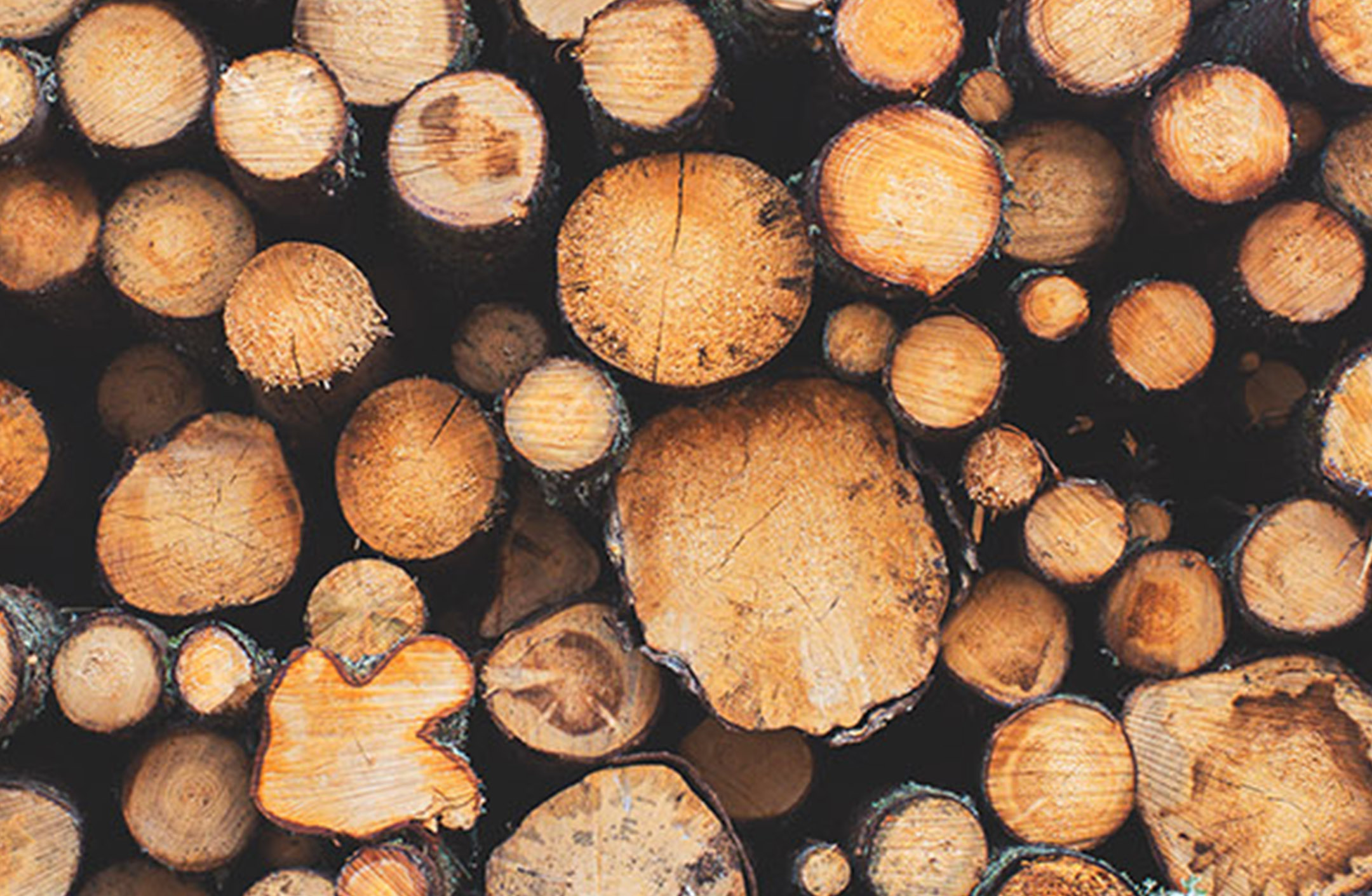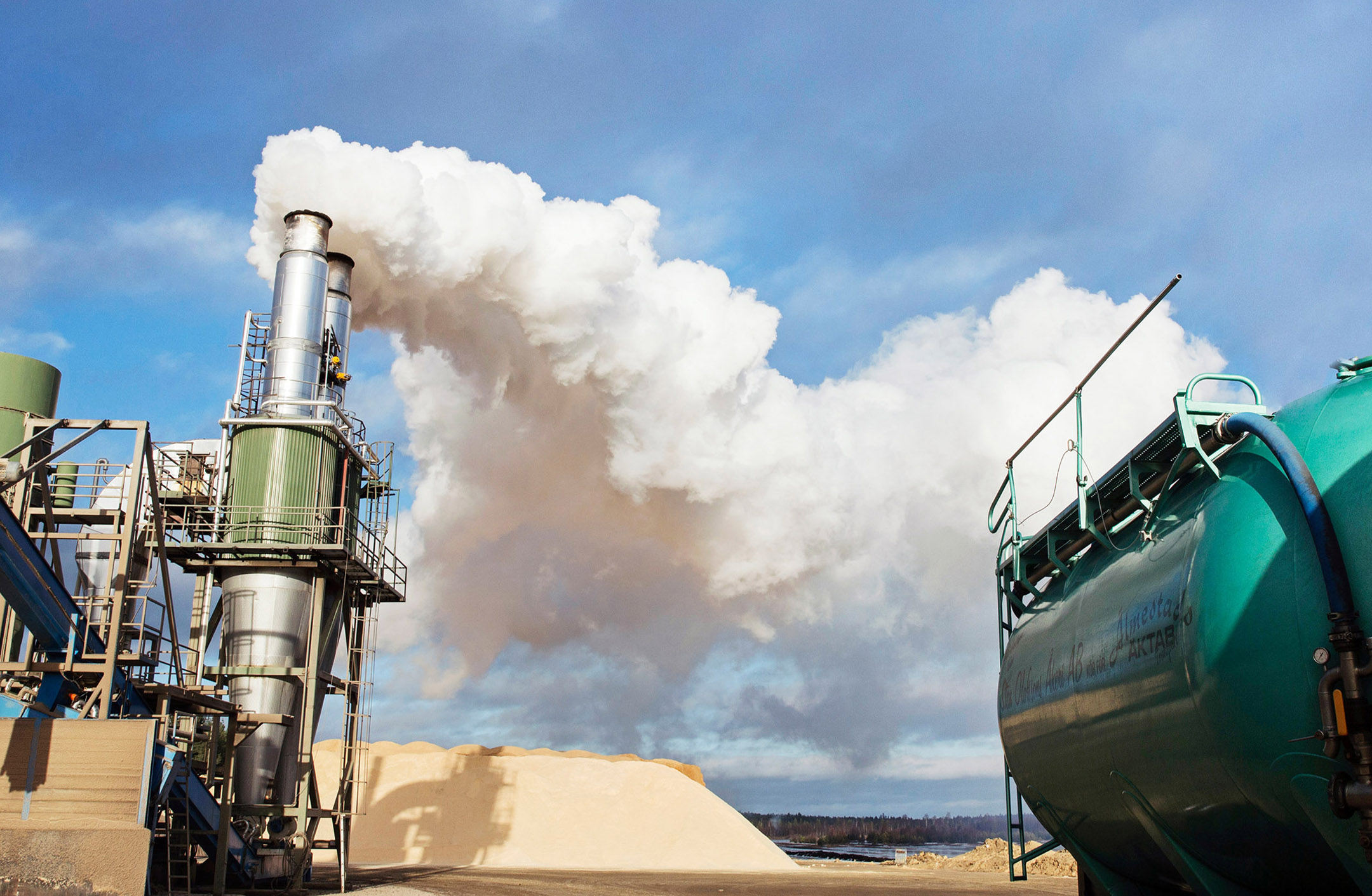Which biofuel is the right one?
Which biofuel is best suited for the process industry? Here you can read about the advantages and disadvantages of different biofuels.

Process heating district heating Property heating
Which biofuel is the right one?
An increased use of biofuels is central to the EU achieving its climate goals. Biofuels are not the only solution for the process industry, but they play an important role in the climate transition for industry and society. What are the differences between the various biofuels? What are the advantages and disadvantages of each fuel? Scandbio has the answers.

Environment and economy as drivers
The process industry’s conversion to pellets and other biofuels is driven by two primary factors: increased environmental requirements and the economic advantage over fossil fuels. Regardless of which incentive matters most to you, the end result for the environment is always positive.
Switching to biofuels can, however, feel like a jungle. What is most important to consider when choosing biofuel? In this article, we explain the basic differences between fuels.
Increased demands on your sustainability work
Process industries and heating plants are increasingly switching to renewable biofuels. The development is thus moving in the right direction, which is positive for all actors involved – manufacturers, producers, consumers and society. Strengthening their own sustainability work is one explanation to why process industries and heating plants take environmental actions seriously, but demands from customers and end users certainly play a vital role too.
The requirements are usually based on phasing out fossil fuels and thereby reducing emissions of greenhouse gases such as carbon dioxide. Today environmental issues weigh as much as issues related to production technology, innovations and economics. Well-thought-out, credible sustainability work increases the attractiveness of everything from products to services – a development embraced by Scandbio. We believe that a combination of biofuels and energy from sun, wind and water is the way forward in our part of the world.
Start with the right processes
If a company is to be considered a sustainable alternative when compared to a less sustainable counterpart, the entire value chain must live up to a higher standard. Everything from extraction of minerals, production of raw materials, processing and packaging to transport, distribution, sales and recycling affects the total carbon footprint. A key link in the chain is how process heat and energy for properties and homes is produced and used. Pellets are proven to reduce industry’s footprint as they are a natural and carbon dioxide-neutral biofuel.

Pellets for better profitability
Converting to biofuels from fossil fuel oil is always positive for the economy. It’s also one of the main reasons why users around the EU are making the switch. How big the profitability will be – and how long it takes for the investment to pay off – depends on how the conversion is done, the choice of biofuel, fuel quality, supplier, boiler and technology as well as the global development of the oil price.
There is no proof of profitability, but you can be sure that biofuels lead to better economics. If the price of oil were to fall and the world situation stabilises, it would of course become more economically attractive to use fossil oil … for a time. Oil will never be a long-term or sustainable choice for the industry or the environment.
Adding to the complexity of using fuel oil, the price of emission rights for energy-intensive industries has increased in recent years, and emissions trading will be further regulated, reflected in the price trend. Thus, economic and environmental factors go hand in hand when choosing your new fuel. As industry in general, and the process industry in particular, is characterised by energy-intensive processes, heating buildings and factories is a central issue.
How is wood powder used?
Wood powder is a natural fuel based on sawdust and cutter shavings, which are residual products from the wood industry. It can be milled before it’s delivered to your heating plant, but it can also be milled on site if the distance to the supplier is too great.
If the supplier is located near you, there are certain economic advantages to using finished wood powder. It reduces the production cost since you neither have to invest in a grinder nor have to take care of its operation and maintenance.
However, due to the low density of wood powder (energy per kilogram), it’s usually most economically justifiable to have pellets delivered and to grind it into powder at your own site.
Entitles to electricity certificates
Wood powder is exempt from energy tax and carbon dioxide tax, which makes the fuel eligible for electricity certificates. When using wood powder, however, pipe bends should be reinforced because of increased wear on the pipes.
Process heating with dry wood chips?
Dry wood chips are a common biofuel that has been used for a long time, also in the process industry. It’s cheaper than traditional fuel oil, it’s a renewable material and it does not emit more carbon dioxide than it consumes. In this way, dry wood chips do not contribute to the greenhouse effect.
The fuel is created from by-products from the sawmills when boards and planks are cut to the right lengths. While its origin is the fine-tuning of dried material, it must be broken down in special machines in order to be used as fuel. Dry wood chips should not be confused with return wood chips or forest chips.
Volume is the main problem of dry wood chips
Dry wood chips are often marketed as a product with a low moisture content, but it’s worth remembering that the moisture content is approximately 15–20 %. Pellets from Scandbio have an average moisture content of only 6–8 %. This means that considerably more dry chips than pellets are required in terms of volume to achieve the same energy.
The higher the moisture content, the more water must be removed during burning. The volume is thus the main problem of dry wood chips, as the fuel generally requires a lot of storage space. Most often, it’s stored in large stacks that are several meters high, either out in the open or in a wood chip barn. Manual feeding with wheel loaders or similar is required as well as large areas for unloading by truck. In other words, what seems relatively cheap when purchasing leads to other costs down the line – more personnel, more machines, more transports and larger storage facilities.
What’s good about tall oil pitch …
Tall oil pitch has several advantages, but for the process industry there are a number of disadvantages as well. Many of the positive properties associated with fossil fuel oil are found in tall oil pitch, such as high energy density and homogeneity. The start-up of the boiler is quick and tall oil pitch enables quick regulation. The fuel is also exempt from energy tax and carbon dioxide tax, and entitles to an electricity certificate. It all sounds good on paper, but in reality, tall oil pitch is only used at a few processing plants. Why?
… and what’s not so good
As tall oil pitch is strongly linked to the forest industry, availability is the biggest problem. When the pitch is extracted from crude tall oil, it has the form of a brown, viscous liquid. This must be preheated to 50–120 °C in order to be transported in the plant’s pipelines. Tall oil pitch is extremely corrosive at high temperatures, which means that the pipes in your heating system must be made of stainless or acid-resistant materials.
Conversion from burning fossil fuel oil does not require any major technical interventions, but you should be aware that tall oil pitch requires more frequent sweeping intervals and cleaning equipment. Lastly, tall oil pitch also has a strong and pungent smell that can cause allergic reactions.
Vegetable or animal bio-oil?
Basically there are two types of bio-oils; vegetable and animal, where the first is the most common. The basic material mainly comes from rapeseed and turnip. Animal bio-oils, on the other hand, are rare on the market, as a permit and an approved facility are required. The use of animal bio-oils will probably decrease further in the future. A bio-oil, regardless of type, is characterised by a relatively good calorific value and low sulfur content.
Varying quality
The oils are classified as renewable fuels, which means they are exempt from energy tax and carbon dioxide tax, but only certain oils qualify for electricity certificates. The risk of fire is considered to be lower compared to traditional oil, but some bio-oils can spontaneously ignite if the oil ends up on, for example, a cloth.
The biggest problem with bio-oils is that availability and quality vary greatly depending on supplier. This affects everything from maintenance to burning, and in the worst case, a low quality can lead to the oil not igniting at all. Stock management is also a problem as most suppliers have small stocks.
Pellets or wood powder?
Scandbio are specialists in pellets and wood powder, products based on residue from local sawmills. Our products are usually delivered as pellets, but several of our customers also grind our pellets on-site.
In many cases, pellets are the main fuel, in other cases pellets and wood powder can complement other fuels. It all depends on the design of the facility, the customer’s processes and basic needs. There are big differences between industries that operate around the clock and those that have many continuous starts and stops. In the latter case, powder is usually preferable, as it burns directly in the drum. Pellets, like wood powder, are exempt from energy and carbon dioxide tax and entitle to an electricity certificate.
Six production facilities
Regardless of whether you choose pellets or wood powder, it will be likely be more cost-effective and price stable than fossil oil or gas. they are also both carbon dioxide-neutral alternatives that do not contribute to the greenhouse effect, as they will not generate more carbon dioxide than the trees absorb during their lifetime.
Scandbio’s six production units ensure you get reliable deliveries and products made of domestic raw materials, sourced from sawmills in each factory’s vicinity. The proximity to our facilities means that we can give the process industry and heating plants reasonable transport prices.
We also monitor the quality of the products on an ongoing basis together with accredited quality institutes. This means that Scandbio can deliver pellets and wood powder with high and consistent quality as well as good energy density. You know what you get and when you get it, which is central to your process heating and property heating.

Do you have questions?
Please get in touch!
